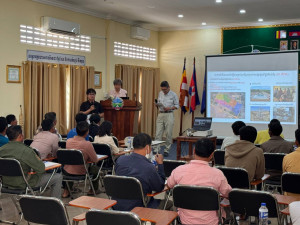
Activity
The 9th Farmers’ Workshop was held on December 3rd, 2025
On December 3, 2025, the 9th Farmers' Water Users Association Workshop was held at the Pursat Provincial Agriculture, Forestry and Fisheries (PDAFF) Office. This time, we invited representatives from farmers downstream of the project site's branch canal S2 to explain the SATREPS project and the benefits of intermittent irrigation (AWD).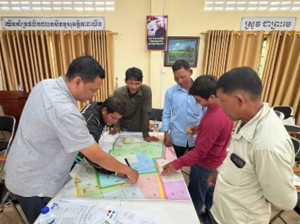
Activity
The 8th Farmers’ Workshop was held on December 2nd, 2025
The 8th Farmers' Water Users Association Workshop was held at the Pursat Provincial Agriculture, Forestry and Fisheries Office (PDAFF) on December 2, 2025. The purpose was to understand the current status of water management between rice paddies using field-crossing irrigation among farmers in the project site, in preparation for future intermittent irrigation implementation.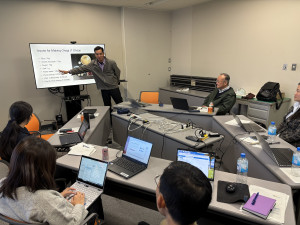
Activity
The third short-term training in Japan (LCA) was held.
From November 17 to 22, 2025, the training for Cambodia counterparts was held in Japan. The three researchers from Royal University of Agriculture (RUA) joined this program.
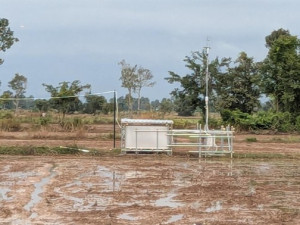
Activity
Start of Methane Flux Tower Observation in Rice Fields
In October 2025, a methane flux observation tower was installed and put into operation in the Damnak Ampil Irrigation Scheme, Pursat Province, to evaluate methane emissions from rice cultivation.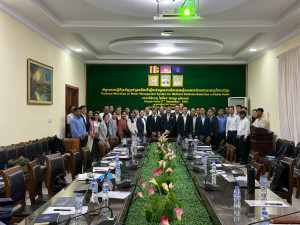
Activity
The Technical Workshop on Water Management System for Methane Emission Reduction in Paddy Fields was held on September 17th, 2025
On September 17th, 2025, "Technical Workshop on Water Management System for Methane Emission Reduction in Paddy Fields" was held at the Royal University of Agriculture in Phnom Penh.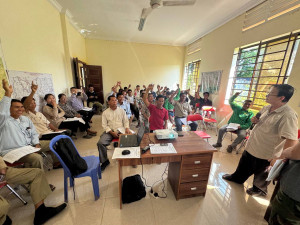
Activity
The 7th Farmers Workshop was held on July 30th-31st
On July 30th and 31st, the 7th Farmers Workshop was held in the Damnak Ampil Irrigation Schemes, Pursat Province.Activity
The 6th Farmers Workshop was held on July 24th
On July 24th, we had the 6th Farmers’ Workshop at the meeting room of Pursat Provincial Department of Agriculture, Forestry and Fisheries (PDAFF).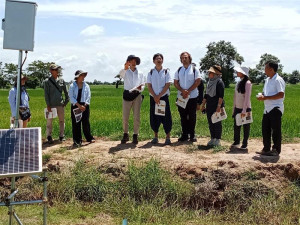
Activity
IRRI researchers visited project site
On June 26, 2025, researchers from International Rice Research Institute (IRRI) visited the SATREPS Project site. The IRRI visitors included two (2) members from the headquarters in Philippines and four (4) members from Cambodia office.
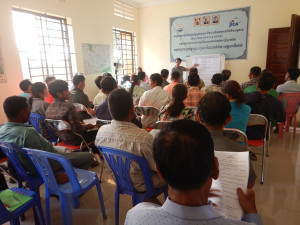
Activity
The 5th Farmers Workshop was held on June 3rd-4th.
On June 3 and 4, 2025, the 5th Farmers Workshop was held in the Damnak Ampil in Pusrat Province.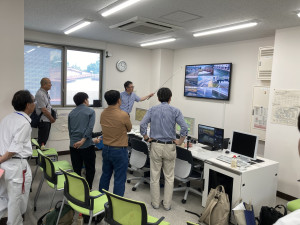
Activity
The second short-term training in Japan (ICT Water Management) was held.
Training for Cambodian counterparts was conducted in Japan from June 1 to 13, 2025.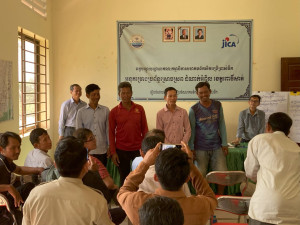
Activity
The 4th Farmers Workshop was held on May 20th
On May 20, 2025, the RiceGX-SATREPS Project held its 4th Farmers Workshop in Pursat Province to establish Cambodia’s first Farmers Water User Sub-Group (FWUSG) under the existing FWUC framework.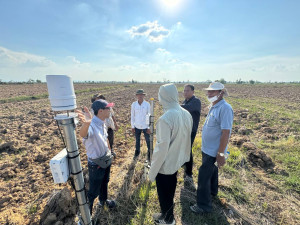
Activity
Workshop on ICT Decision Support Applications
On April 25 and 28, 2025, the RiceGX-SATREPS Project held workshops on ICT decision support applications for counterparts at the Royal University of Agriculture (RUA) and in the ICT sector, focusing on the utilization and maintenance of ICT-based decision support systems.
